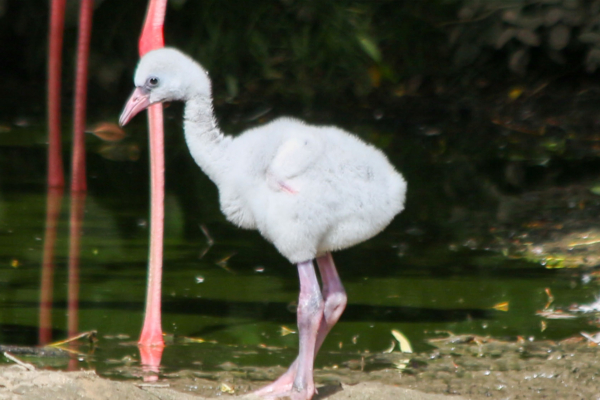In a wildlife conservation area in the UK, a young flamingo recently escaped from the protected enclosure and is currently missing. The staff at the conservation area are deeply concerned as the young bird is only a few months old and efforts are underway to search for its whereabouts.
According to the British Broadcasting Corporation (BBC), despite its underdeveloped wings, the flamingo named Frankie managed to climb over the fence of Paradise Park, located in Cornwall, on November 2, and fled the scene.
Nick Reynolds, the manager of the conservation area, told the BBC, “Honestly, I don’t think it knows what it wants, it’s like a mischievous teenager.”
Reynolds mentioned that sightings of the bird have been reported, prompting a strong desire to receive information about its whereabouts. “We need to find it as soon as possible. Honestly, we are really anxious.”
Frankie hatched on July 1 and was the first flamingo chick to hatch in the nest and be raised by its parents at Paradise Park.
Reynolds expressed that Frankie was the center of attention throughout the summer, lifting everyone’s spirits and becoming a favorite among all.
The park is home to a total of 15 flamingos and is the only conservation area in Cornwall that houses these beautiful birds.
Young flamingos are grey in color and gradually develop pink feathers by consuming ‘crop milk’ regurgitated by their parents and feeding on various algae, crustaceans, and insect larvae.
Reynolds voiced concerns about Frankie potentially being threatened by predators like foxes and hoped the bird would find a safe haven.
“If it’s in the water, it’s fine, but if it’s on land, you know, that really worries us,” he added.
National Geographic magazine notes that flamingos are renowned for their vibrant pink feathers, long stilt-like legs, and S-shaped necks.
When hunting for food, flamingos dip their heads into the water, flip their bodies upside down, and use their bill as a shovel to scoop up prey. With webbed feet, they can “run” on the water’s surface, gaining speed before taking flight into the sky.
Flamingos build their nests along the water’s edge, appearing as a pile of mud. The female digs a shallow hole at the top of the mud heap, lays an egg, and takes turns with the mate to incubate it, maintaining the egg’s temperature. After about 30 days, the egg hatches.

